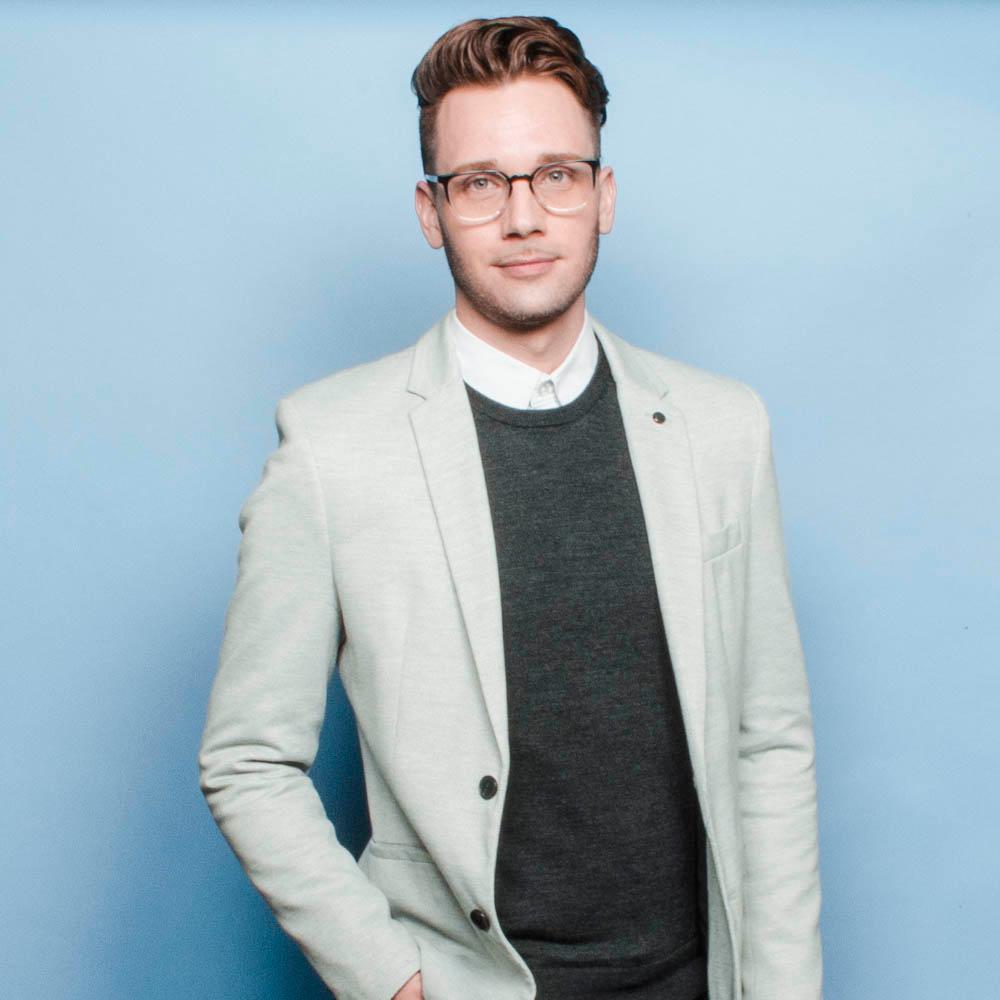In this era of rapid technological advancement and ever-evolving media consumption patterns, traditional office buildings and other underused properties are finding new life and purpose through adaptive transformation. These once-static buildings are being reshaped into dynamic media spaces that house broadcasting facilities, media hubs, pre- and post-production studios, and a host of other creative media environments. This transformative trend presents real opportunities for revitalizing underused assets in today's challenging real estate market.
The Changing Landscape: A New Way to Use Space
Traditional office buildings are witnessing a drop in demand from the evolution of hybrid work and business culture leaving many office spaces underused or empty. BDP Quadrangle has been collaborating with forward-thinking clients who recognize the opportunity to revitalize their assets and transform conventional office spaces to cater to the media industry’s demands. In doing so, we are breathing new life and viability into those assets ushering a new way to reuse traditional office space.
We’ve implemented an array of unconventional building interventions when repurposing space for media. These interventions have included roof removals and column reconfigurations, all tailored to accommodate media-specific elements like theatres and acoustics. These interventions might appear impossible to the untrained eye, and building owners may initially think that hosting media activities in their spaces is unfeasible due to various factors such as ceiling heights, structure, HVAC, power supply, acoustics, and more. Similarly, some media companies may overlook traditional office buildings for the same reasons. Major advancements in media technologies, coupled with a meticulous evaluation of these underutilized assets, unveils their hidden potential and transforms the seemingly impossible into reality.
Adapting to Foster Creativity and Collaboration in Media Hubs
One of the most exciting aspects of repurposing underused buildings into media spaces is the creation of media hubs. These hubs serve as consolidated locations for content production, television and radio broadcast studios, control rooms, associated support functions such as prop houses, post production and audio recording facilities, and industry associations integrated with flexible, creative workspaces. With their adaptive layouts and spacious interiors, these buildings are perfect for nurturing creativity and collaboration. Media professionals benefit from the flexibility these environments offer, often blending functions across platforms, fostering the innovation required to capture audiences.
299 Queen Street West was an iconic heritage building in downtown Toronto that BDP Quadrangle painstakingly repurposed as the headquarters of the CHUM television empire. The transformed building serves both as a content-producing location and a social hub for fans and viewers. This is all while standing as a heritage landmark symbol for Toronto. Its history, iconic status and central location have made it a media hub where creativity, innovation, and talent converge and led to the revitalization of the entire Queen West neighbourhood. To this day, it continues to play a vital role in shaping the future of media in Canada and beyond.
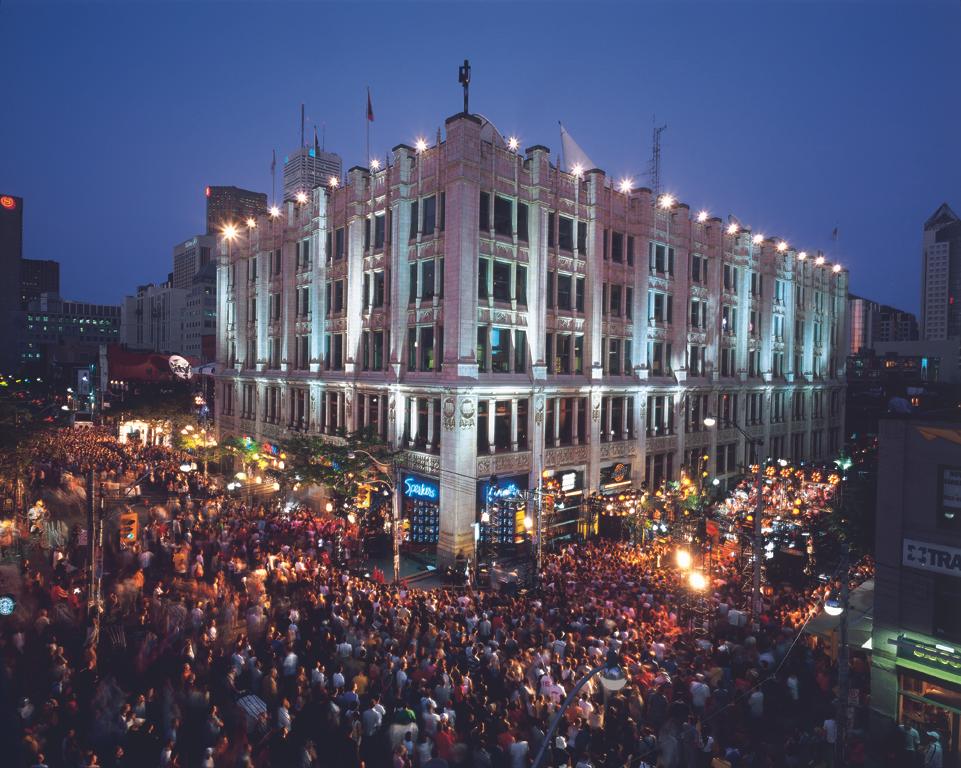
299 Queen Street West
Broadcasting Facilities: A New Use for Traditional Space
It’s now possible for traditional office buildings to be adapted into broadcasting facilities, helping to satisfy the increasing demand for that type of space. In the past, TV studios required substantially taller ceilings and enhanced acoustics to make such adaptations feasible. Advancements in camera and microphone technologies have significantly broadened their capabilities, allowing for a wider range of shots, while immersive digital sets occupy less space than traditional ones. This new use of space is designed to meet the technical and operational needs of broadcasters, ensuring seamless live broadcasts and high-quality production. The strategic placement of studios, acoustic enhancements, and state-of-the-art equipment transform these buildings into hubs for newsrooms and talk shows along with a variety of other entertainment content.
When Canadian telecom giant Rogers Communications moved to consolidate their Sportsnet Studios into their main campus in downtown Toronto, BDP Quadrangle took on the challenge of adapting the existing heritage building to suit the needs of a television studio. This included strategic interventions such as reorganizing mechanical services to maximize ceiling height, leveling the floor slab, and adding an internal acoustic barrier along the exterior façade to both assist lighting control and block noise infiltration from the busy urban street.
Sportsnet Studios (Before)
.jpg)
Sportsnet Studios (Present)
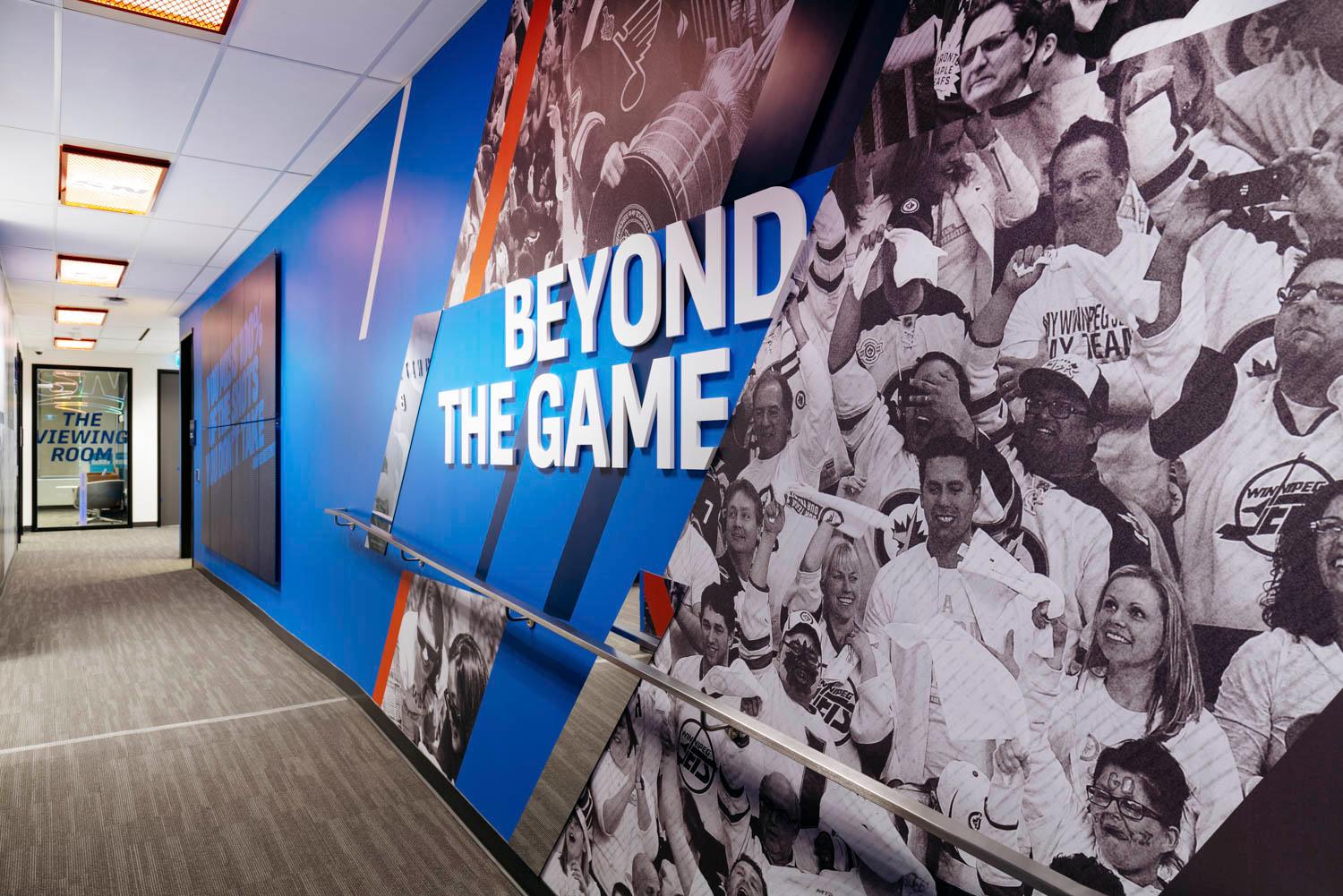
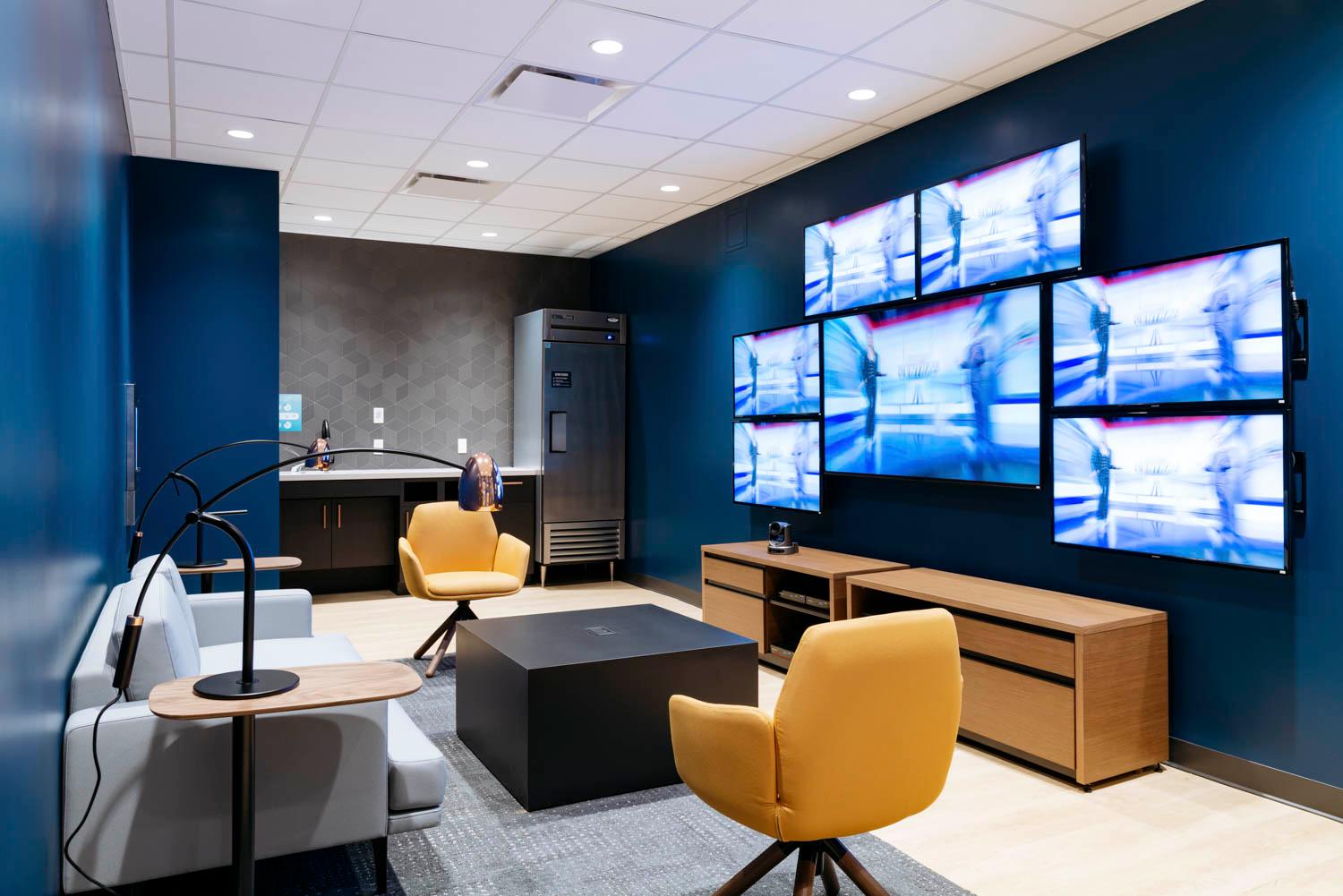
Pre- and Post-Production: Fostering Innovation and Creating the Magic
Media professionals thrive on creative brainstorming and collaboration, and traditional office buildings are being reimagined to accommodate this. Repurposed buildings are equipped with open workspaces, meeting rooms and cutting-edge technology to facilitate the pre-production process. These environments nurture idea generation and concept development and often incorporate virtual reality (VR) and augmented reality (AR) tools to visualize concepts and enhance creativity further.
Post-production transforms raw footage into polished consumable content. Today, traditional office buildings can be adapted into post-production facilities, complete with editing suites, acoustically robust sound recording and mixing rooms and state-of-the-art audiovisual equipment. These adaptations address existing architecture to foster an atmosphere conducive to creativity and the production of high-quality content. Achieved through careful rearrangement of building services, optimized acoustics, incorporation of advanced technology infrastructure, and versatile spaces tailored to the unique needs of post-production processes, all of which are now possible because of the incredible advancements of software, media, communications recording and capture technologies.
Located in Toronto, Company 3 (formerly Deluxe) occupies a three-storey space in a transformed 1990s office building that contains open concept workspaces, a welcoming atrium and highly specialized post-production facilities for film and television and streaming platforms. The space also includes a custom private final editing and grading theater added on the building's rooftop, as well as a new feature stairway designed to enhance interconnectivity in the creative process. This space exemplifies how an underused office building can be tailored to accommodate even the most specialized clients.
Company 3 (Before)
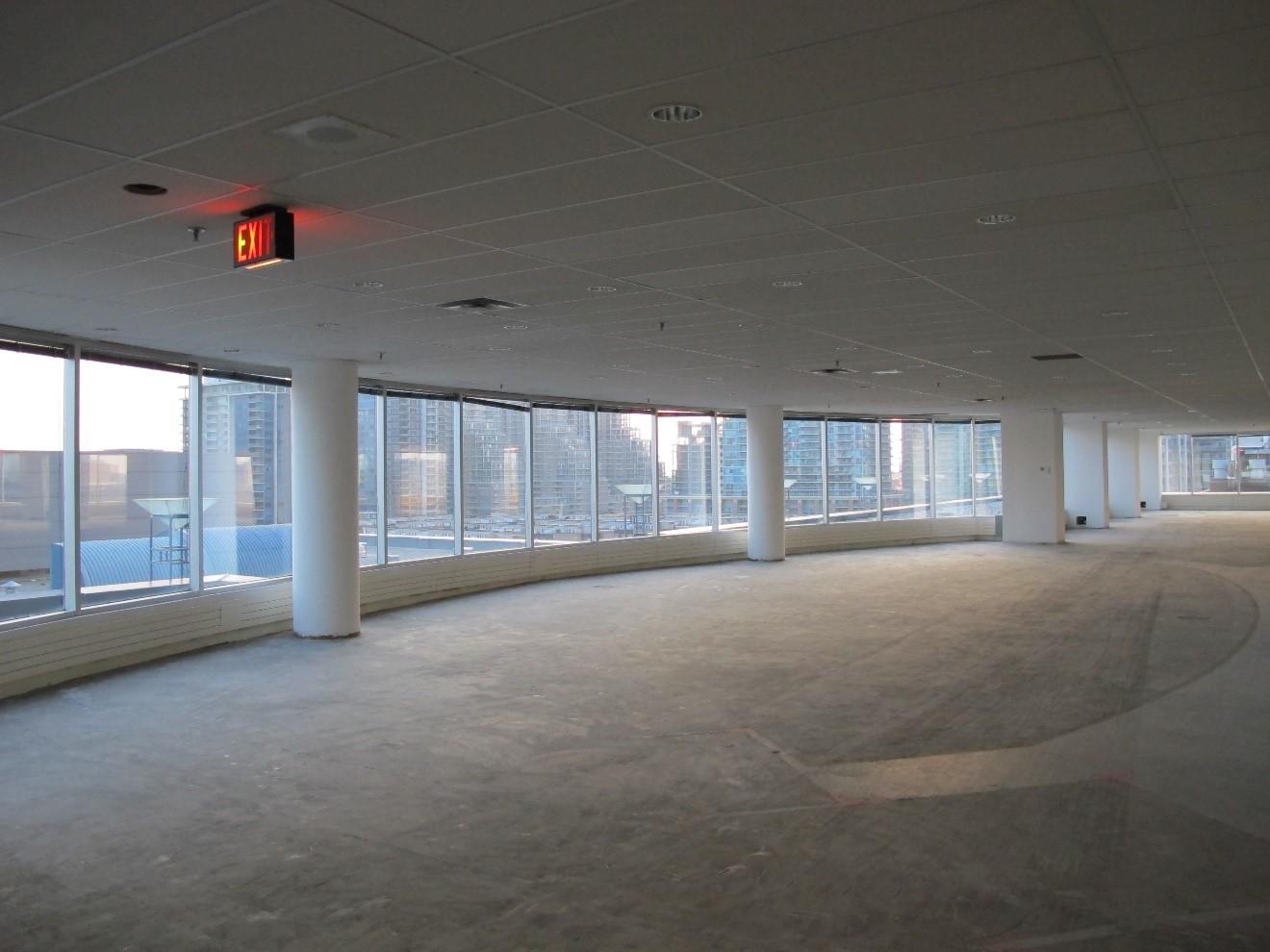
Company 3 (Present) 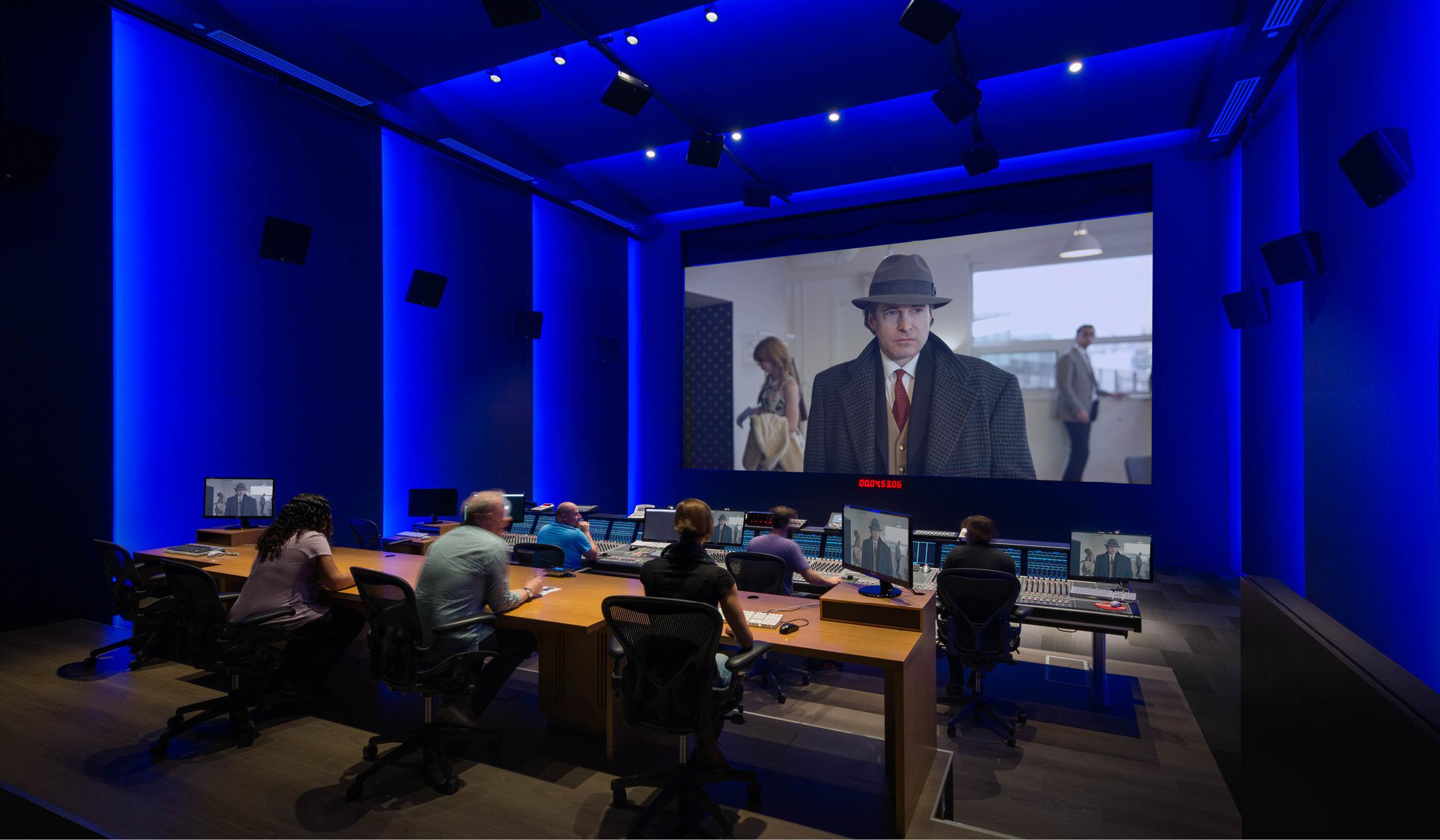
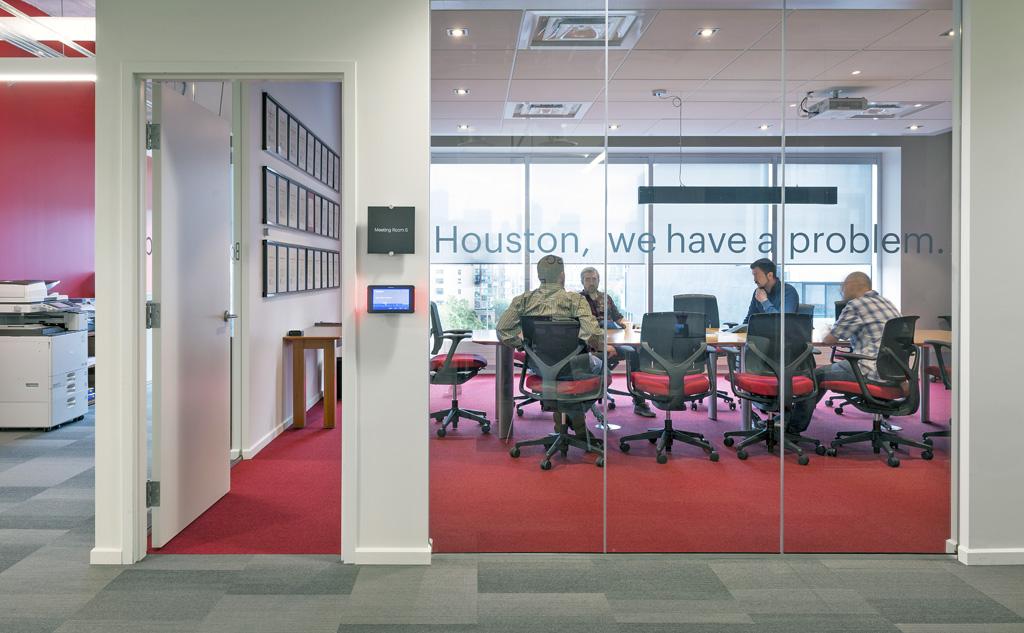
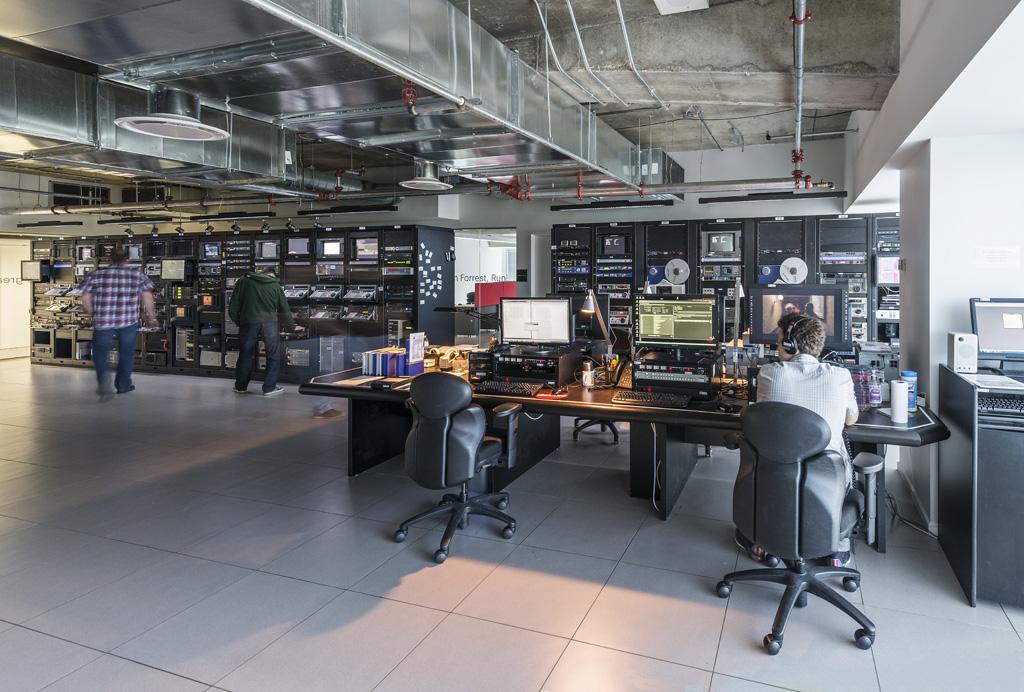
Revitalizing Underused Assets in a Challenging Market
Amidst a challenging real estate market and the reinvention of how and where we work, the transformation of underutilized buildings into media spaces offers a compelling opportunity for asset revitalization. By repositioning these properties to cater to the media industry's unique requirements and meeting the media industry’s demand for space, property owners can unlock new revenue streams and maximize the value of their assets.
Additionally, turning to an adaptive reuse strategy supports sustainability goals by repurposing existing structures keeping demolition materials out of landfill and reducing the waste that new construction creates. It also serves to enhance a city’s cultural fabric by preserving architectural heritage.
The transformation of traditional office buildings into vibrant media spaces is a beacon of hope in this new market landscape. This approach not only breathes new life into underperforming assets but also helps fuel the media industry's growth, demand for innovation and content creation.
Written by Dustin Sauder and Rob Dyson
